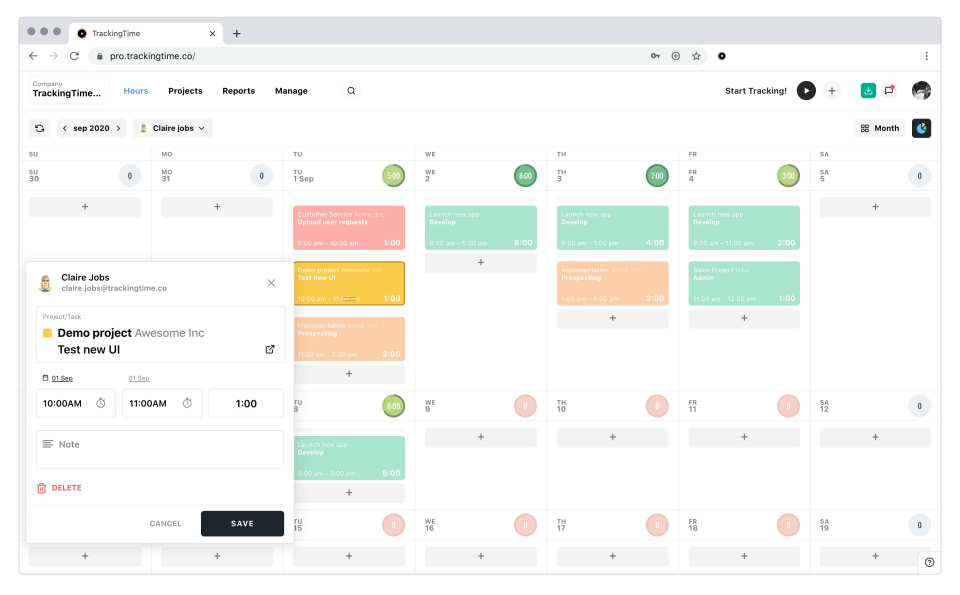

You can customize this list to fit the needs of your business, of course, but here’s the order that most traditional businesses would use.
#Trackingtime google sheets series#
For our example, we’ll assume you’re now filling in row 6.Īcross row 6, input a series of headings. Leave a blank row or two for visual space. 3) Add time-related fieldsīelow the label rows you just added, it’s time to make a new horizontal row of headings. Something like A4 gets Manager:, and the next cell is also blank for filling in.Īt this point, you should have a very basic file with a title and several important fields but no time data yet. For example:Ī2 gets Employee:, B2 is blank for the employee to fill in. Add these in row after row, or get creative and double-row it. You’ll probably want one for Employee and Manager and a Date or Month field perhaps also the department name. Next, add some orienting fields below the title field. Next, click the pop-out arrow on the Alignment menu section and choose Horizontal, then Center Across Selection. If you really, really want your title centered over the chart, there’s another way. Some users might be tempted to merge and center that title across the top of the spreadsheet for aesthetics’ sake, but please don’t: Merged cells can cause problems later on if you want to sort or filter data using this sheet. Bold this text and increase the size - you may even want to use color and put it on a colored background to make it stand apart. Next up, let’s add some titles and labels so people will know what this chart is and where to enter information.Ĭlick back into the A1 cell and type your company name (or business unit, or department - however you plan to use this sheet). 2) Add titles and labels to your timesheet Now you should have a wider-format sheet with more room to see each entry. Now select the remaining columns (B through L should be enough for now), then paste (ctrl + c or command + c). Make all the columns in the sheet the same width as column A by highlighting column A (click once on the A itself), then copying (ctrl + c or command + c). Now, delete the word department - we were only using that to establish width. Then stretch column A horizontally, so the entire word is visible. Click on cell A1 and type a long-ish word, such as department. Before you start entering data and formulas, let’s get some basic formatting out of the way. 1) Open a new spreadsheet and start formattingįirst, open a new blank Excel sheet. Here are the four steps to get an Excel-based time tracker or timesheet built and running. But if you’re not ready to ditch the spreadsheet quite yet, it is feasible to build a basic time tracker in Excel. We aren’t particularly fond of building time tracking spreadsheets in Excel because there are many better tools for this, including Teamwork Timer for tracking time across projects. Many organizations new to formal time tracking choose to start with a time tracking spreadsheet, like those you can make in Microsoft Excel or Google Sheets. Building a time tracking sheet in Excel: 4 steps Plus, we’ll share what to do if you want to go deeper into task- or project-based time tracking - and why you definitely should.
#Trackingtime google sheets how to#
Many larger businesses already have access to a digital timekeeping system as part of a broader HR, payroll, or ERP suite.īut if you’re not quite ready for a solution like that, you still need to keep track.Ī simple free Excel time tracking template can be a great short-term solution until you’re ready to implement something more powerful.īelow, we’ll show you how to build a weekly or monthly time tracking sheet in Excel. Every business with hourly employees needs a clear and effective way to track employee time.


 0 kommentar(er)
0 kommentar(er)
